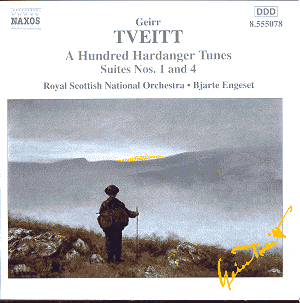 Composer: John Philip Sousa (1854-1932)
Composer: John Philip Sousa (1854-1932)
Works: Music for Wind Band, Vol. 2
Performers: Royal Artillery Band, Keith Brion (conductor)
Recording: August 1999, Blackheath Concert Hall
Label: Naxos 8.559059
Duration: 54:58
Review Date: October 2001
In the pantheon of American composers, John Philip Sousa stands as a towering figure, not merely for his prolific output of marches but for his ability to encapsulate the spirit of a nation in musical form. The Naxos release of Music for Wind Band, Vol. 2, under the baton of Keith Brion, offers a rich survey of Sousa’s oeuvre, showcasing both the familiar and the less-explored realms of his artistic palette.
Sousa’s early immersion in military music as the conductor of the U.S. Marine Band provided fertile ground for the development of his signature style. His marches, characterized by their robust rhythmic structure and bold orchestration, are the cornerstone of his legacy. The included marches such as “The Royal Welsh Fusiliers” and “Wisconsin Forward Forever” exemplify this heavy-beat formula, which Sousa mastered by the time he earned the moniker “The March King.” These pieces feature Sousa’s trademark instrumentation, with brassy exclamations and the percussive drive of the bass drum and cymbals, producing a sound that is both invigorating and unmistakably American.
However, this recording also highlights the more nuanced expressions in Sousa’s catalog, particularly in the works that diverge from the march. The “Songs of Grace and Songs of Glory,” for instance, stands out as an early example of Sousa’s ability to evoke a sacred atmosphere through lyrical woodwind lines and soft brass harmonies. The meditative quality of this piece, which draws upon hymn tunes, is beautifully rendered by the ensemble, reflecting a sensitivity that contrasts with the exuberance of Sousa’s more vigorous marches.
In “Willow Blossoms,” we observe a delightful syncopation reminiscent of ragtime—an homage to Scott Joplin’s influence. Brion’s interpretation allows the underlying rhythms to breathe, capturing the essence of a leisurely stroll through Willow Grove Park, while the gentle swaying motifs evoke the imagery of willows in the breeze. The performance here is particularly commendable for its dynamic shading, allowing the woodwinds to interplay gracefully.
The “Suite at the Movies,” subtitled “Scenarios of Cinematographers,” showcases Sousa’s ability to craft programmatic music. While the absence of specific film titles in the accompanying notes feels like a missed opportunity to contextualize the work historically, the movements themselves are colorful vignettes. The second movement, depicting a “pretty maid pleading for safety,” is a charming instance of Sousa’s knack for storytelling through music. The ensemble captures the contrasting emotions effectively, and the lighthearted ragtime of the third movement is executed with verve, echoing the joyous spirit of village celebrations.
Sousa’s “Rose, Shamrock and Thistle” further demonstrates his skill in thematic development; the piece is a medley that beautifully weaves together British folk tunes with a deft orchestration that highlights the band’s capabilities. The transitions between themes are seamless, showcasing Sousa’s prowess in maintaining listener engagement through variation and contrast.
The recording quality is commendable, with the engineering providing clarity that allows each instrument’s voice to emerge distinctly, even during the more tumultuous passages. The brass shines with a bright, penetrating quality, while the woodwinds offer a warm, enveloping sound. This balance is essential in wind band music, and the engineers have succeeded in capturing the nuances of the ensemble’s performance.
Historically, Sousa’s works reflect the socio-cultural landscape of America in the late 19th and early 20th centuries. His compositions not only served military and ceremonial purposes but also provided a soundtrack to the burgeoning American identity. The marches were performed at a myriad of public events, fostering a sense of national pride and unity. The inclusion of pieces like “King Cotton”—a work that emerged from the Cotton States Exposition—underscores Sousa’s role in celebrating the American experience and its regional diversity.
In conclusion, Naxos’s Music for Wind Band, Vol. 2 serves as a valuable testament to Sousa’s multifaceted talent. While his marches undoubtedly dominate the disc, the inclusion of works that reveal his lyrical and programmatic side offers listeners a broader perspective on his contributions to American music. Keith Brion’s direction, coupled with the Royal Artillery Band’s enthusiastic performance, brings Sousa’s music to life, reminding us that beneath the vigorous exterior lies a composer of remarkable depth and sensitivity. This recording is not merely an exploration of Sousa’s marches but a celebration of the American spirit he so indelibly captured in sound.



